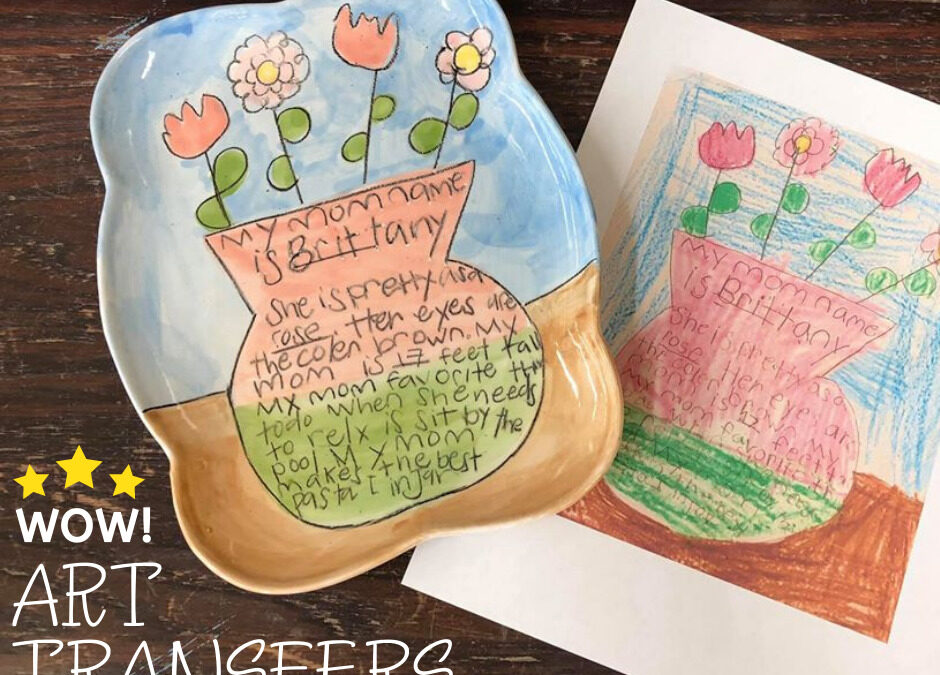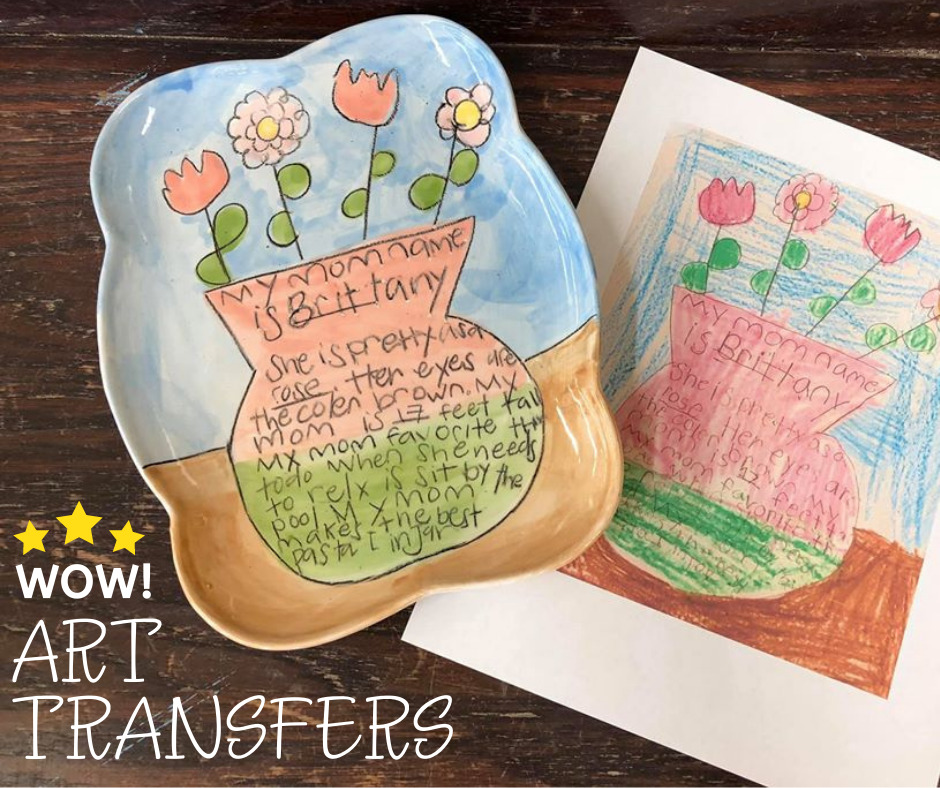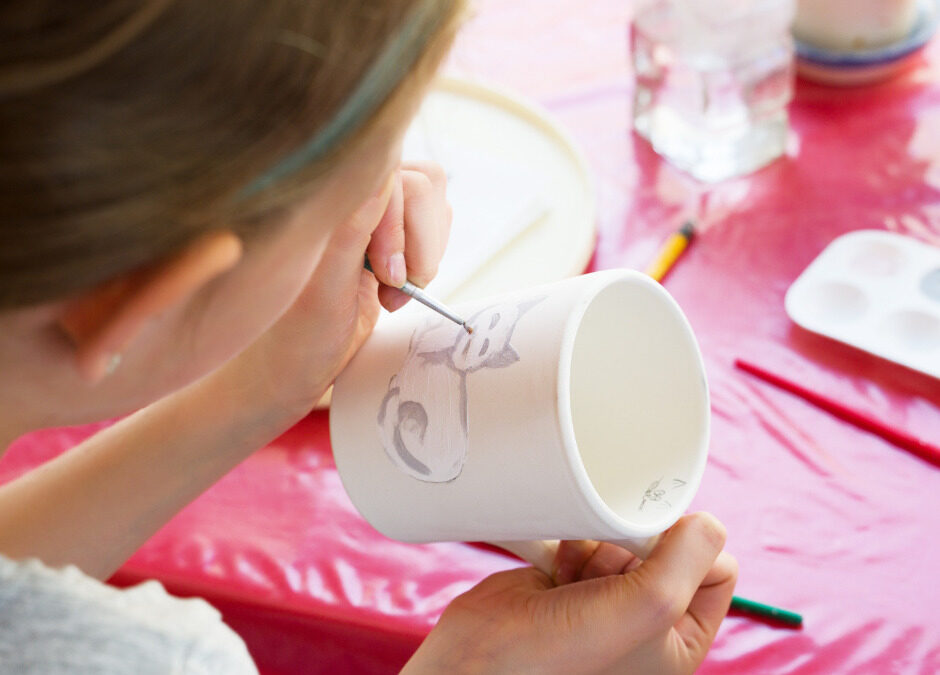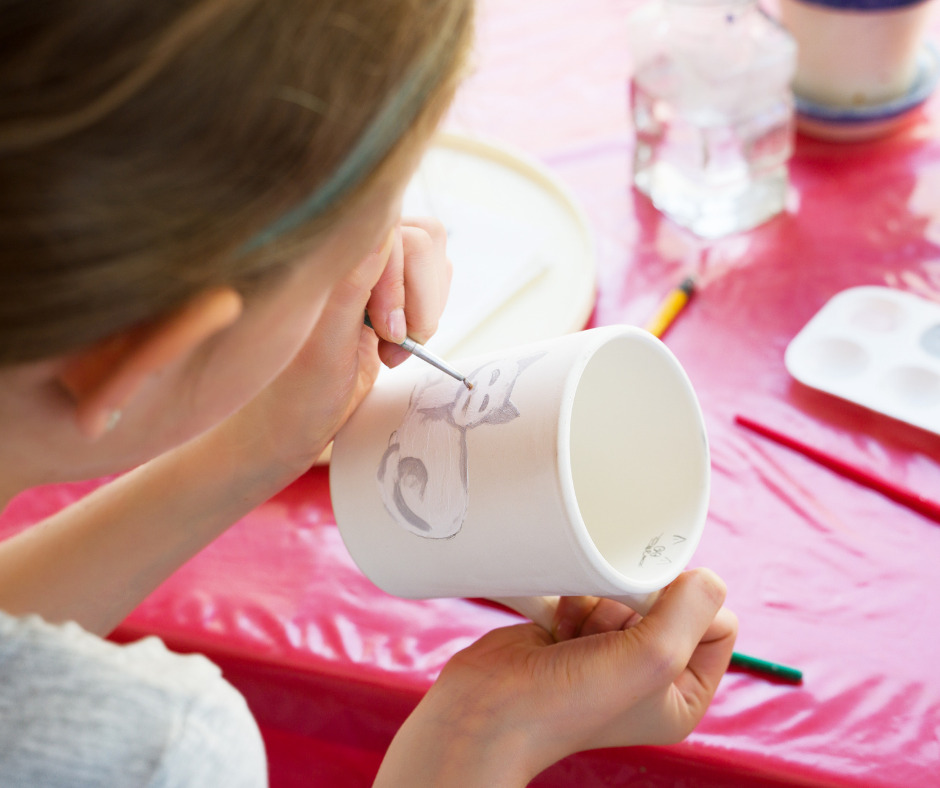
by CCSA Admin | Apr 16, 2021 | Blog
Visit your local studio and make a truly unique piece of pottery – from your own original piece of art!
Whether it’s a black-and-white sketch, color drawing or hand-written recipe, it can be transferred onto pottery.
Preparing your original art: we HIGHLY recommend you make a color copy of the original artwork and bring THE COPY into the studio. You do NOT need the original to create an art transfer.
The process of transferring the artwork to a piece of pottery will depend on your studio, as there are a few ways to transfer your image. Your local studio may also offer custom painting services, allowing you to hand over the project to their artist! Project time frame and cost will also depend on your local studio.
What will you create?! Think gifts, anniversaries and keepsakes. Have fun with it!


by CCSA Admin | Apr 1, 2021 | Blog
Children are naturally creative on their own accord. But if their creativity isn’t fostered, they begin to lose it as they grow into adults. Pablo Picasso famously said, “Every child is an artist. The problem is how to remain an artist once we grow up.”
One of the best ways to encourage a lifelong love of the arts is to enroll your kids in art classes. There is an ever-growing variety of art classes available for kids of all ages. If you’re thinking about enrolling your child in one, you’ll be surprised that these types of classes offer much more than an outlet for imagination and play. Here’s how kids art classes help prepare your child for success in life.
1. Art helps improve fine and gross motor skills.
One of the most basic benefits of art classes, particularly for toddlers, is the improvement of fine and gross motor skills. Because there are so many different types of art – from painting to sculpture to drawing – a variety of tools and techniques are required. For many small children, the struggle is real when it comes to using and developing their tiny muscles to hold and use objects correctly. Art classes teach children how to properly hold a paintbrush, pencils or markers and build hand muscles while playing with clay. Older students will benefit by learning proper painting or drawing techniques, and even build muscle when learning to create more physically-demanding forms of art like sculptures.
2. Creating means learning to make decisions.
During the creative process — whether it’s through visual art, writing, or other activities — we often go through a stream-of-consciousness period at the beginning of a project, then go back and strategically make decisions, revising our ideas until we are satisfied with the finished product. When young children create, they go through that same period of stream-of-consciousness and are often satisfied with the end result. As they get older, however, and their personalities develop, their ideas start to become more complicated. And so they revise, making decisions to try to match the ideas in their heads. Through this, they begin to learn the consequences of their decisions, and how those decisions affect the creative process. Art is equal parts innovation and problem-solving. Through continual art education, kids are instructed to be more strategic in their decision making, which they eventually carry over to the adult world of work, relationships and home life.

3. Art teaches children to be more aware of themselves and others.
Part of the creative process in kids art classes is learning about different artists and the variety of methods those artists use to create their art. This means your child will learn about different artistic styles originating from around the world. But art classes also help your child understand different perspectives, and what the artist was thinking when they created their piece. It helps kids appreciate the different modes of expression others may have, to form and value opinions, to appreciate the beauty around them and how others interpret it. Art feeds open-mindedness and diversity in thought and culture, helping your child to thrive in a diverse and culturally-rich world.
4. Creating art teaches focus and perseverance.
Making art is a process. As your child gets older, their creative visions will become more complicated, requiring more time, attention and technique to fulfill their artistic quest. They will no doubt get frustrated and want to quit at times. Art classes help develop your child’s craft and manage their expectations. They will learn that the creative process is something that’s developed over time, and that honing one’s skills and techniques doesn’t happen overnight! Your child will learn to see their ideas through to the end, which is an important lesson they will carry with themselves for the rest of their life.
5. Art helps children express their emotions in a positive way.
Perhaps more so than anything else, art helps children express emotion in a meaningful and honest way. According to a 2015 report by the National Endowment for the Arts, art activities help kids regulate their emotions so they learn how to control themselves when they are overwhelmed by anger and frustration. Kids gain a sense of confidence as they take the emotions they are feeling, acknowledge and process them into something visual.
There are plenty more benefits that you and your child will receive from art classes but we just covered the basics. If you want to enroll your child in a virtual art class, be sure to find the ones that will fit your schedule best.
Blog post shared from: https://www.hisawyer.com/explore





